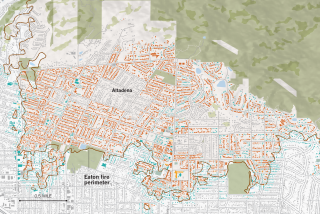Coalition says L.A. Unified underfunds neediest students
- Share via
The Los Angeles school system is improperly diverting money meant for students who need it most, including those from low-income families, according to a coalition of local groups.
The criticism, which echoes that of state officials, centers on hundreds of millions of dollars in increased state funding that is supposed to benefit students who are among the most challenging to educate and who have persistently lagged behind academically: low-income students, students learning English and those in the foster-care system.
Providing extra resources for these students is a centerpiece of funding reforms pushed through by Gov. Jerry Brown.
According to Communities for Los Angeles Student Success, or CLASS, these students are not getting the full benefit of the money that they are generating for L.A. Unified under the new state formulas.
“We have seen slight progress” since last year, CLASS said in a “report card” released this week. Even so, “schools in South L.A., East L.A., Sylmar and Pico-Union are often severely underfunded, and gaps in [academic] achievement persist due to lack of sufficient investment.”
Coalition members include the United Way of Greater Los Angeles, the Community Coalition, the Los Angeles Urban League and the Mexican American Legal Defense and Educational Fund.
CLASS acknowledges that the nation’s second-largest school system faces long-term financial problems but challenges the district’s spending priorities.
Its conclusions are based on research led by Bruce Fuller, a UC Berkeley professor of education and public policy.
Fuller said district officials have made it a priority to rebuild staffing to levels prior to the last major economic recession.
“Much of this increase is not going to the classroom but instead to cover pension and healthcare costs …,” Fuller said. “The district has elected to move new dollars to teacher salaries and fringe benefits, rather than abide by Gov. Brown’s priority: narrowing persisting gaps in student achievement.”
District spending climbed from about $9,300 per pupil in 2006-07, just before the recession, to $12,100 in 2015-16, Fuller said. It’s not the money spent, he argues. It’s where it goes.
Despite its criticism, CLASS praised the district’s transparency with data and budget information. District funding priorities had improved since last year, said Elmer Roldan, director of education programs and policy for the United Way. Still, he said, millions of dollars need to be redirected to better serve students.
He had no specific suggestions on how to achieve this end.
“That’s their job,” Roldan said.
School officials issued a statement in response to CLASS that was conciliatory but also defended the district’s position.
“We are extremely appreciative of the acknowledgement that significant progress has been made in meeting community and state expectations,” the statement said. “We agree that there is more work to be done to ensure great strides are made in the outcomes for all students and especially for our neediest students. … We welcome the opportunity to continue our discussions around an equity agenda that is beneficial to all students in L.A. Unified.”
One difference of opinion concerns staffing at elementary schools: The district used some of the disputed funds to restore assistant principals and library aides across the school system; the coalition argues that the money should have been spent instead on the specific needs of the targeted students. The district counters that these moves benefit such students, who make up about 85% of district enrollment.
Another issue, according to CLASS, is that the district fails to track how programs, resources and schools are advancing students’ academic progress. Among other recommendations, CLASS wants the district to create a permanent position to monitor whether spending is delivering the intended results.
State officials also have criticized how L.A. Unified is spending money and have ordered the school system to redirect hundreds of millions of dollars in future budgets, which the district said this week could result in a “doomsday scenario.”
In a letter to state officials Tuesday, Supt. Michelle King warned that the school system might need “to identify over $1 billion of current programmatic spending to be cancelled to generate funds for new programs, or expansions of current programs.”
She added: “The only way to generate the funds required … is to substantially increase class sizes throughout the District and [then] reassign teachers” to students who qualified for the state funding.
During Tuesday’s school board meeting, King vowed to resist: “The state’s decision is not legally supportable, and we intend to challenge this decision.”
State Supt. of Public Instruction Tom Torlakson responded in writing even before the board meeting ended, pledging “to work through all of these fiscal issues very carefully.” Some of the problem, he said, could be addressed by better documentation.
Times staff writer Sonali Kohli contributed to this report.
Twitter: @howardblume
MORE EDUCATION NEWS
Less test-iness over L.A. teacher evaluations
Parting words: the high school graduation speeches of Los Angeles
State says L.A. Unified spends improperly, must redirect hundreds of millions of dollars
Follow the Times’ education initiative to inform parents, educators and students across California »
UPDATES:
7:20 p.m., June 15: This article was updated with additional details.
8:20 p.m: This article was updated with details from the school board meeting.
2:30 p.m.: This article was updated with additional details.
This article was originally published at 8 a.m. on June 14, 2016.
More to Read
Sign up for Essential California
The most important California stories and recommendations in your inbox every morning.
You may occasionally receive promotional content from the Los Angeles Times.











